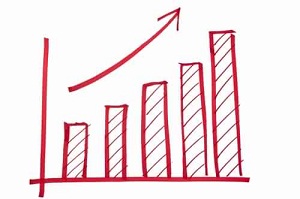
Qatar National Bank (QNB) Group’s economic analysis said that the non-hydrocarbon sector in Qatar continues to drive economic growth, pushing its share of GDP to over half (50.7%) in Q3 2014 for the first time from 49.0% in Q2 2014.
Real GDP growth accelerated to 6.0% in the year to Q3 2014 from 5.7% in the previous quarter, according to figures released by the Ministry of Development Planning and Statistics (MDPS), said QNB in a press release Saturday.
Rapid growth in the non-hydrocarbon sector averaged 11.9% in Q1 2014 to Q3 2014, even higher than our forecast of 11.2% for the full year.
Non-hydrocarbon growth was spurred by large investments in major infrastructure projects and by the fast growing population. On the other hand, the hydrocarbon sector declined 2.8% year-on-year as a result of lower crude oil production and temporary gas production shutdowns for maintenance.
The latest GDP figures confirm Qatar’s ongoing rapid process of economic diversification away from its traditional role as a hydrocarbon exporter towards a manufacturing and services hub. Major infrastructure projects, notably the new metro in Doha, major real estate projects such as Mushaireb in the center of old Doha and to the north, as well as new roads, highways and the further expansion of the new Hamad International Airport, resulted in a 18.5% year-on-year expansion in construction activity – the fastest growing sector.
In addition, transportation and communication increased by 10.5% year-on-year, predominantly owing to increased passenger flows through the new airport. Financial, real estate, and business services also grew robustly (13.7% year-on-year in Q3 2014) as banking intermediation accelerated and real estate services were boosted by the demand for housing for the growing population. Furthermore, trade, hotels and restaurants also grew strongly (13.7% year-on-year) on the back of the growing population, the seasonal Ramadan effect as well as increased tourist activity.
QNB’s press release said that the hydrocarbon sector contracted in the year to Q3 2014 as a result of lower crude oil output and shutdowns for maintenance at gas facilities. A moratorium on new projects at Qatar’s largest gas field, the North Field, means that increases in gas production are likely to be limited.
The strong growth momentum achieved in Q3 2014 continues to be in line with the country’s overall development plan outlined in the National Vision 2030 and the National Development Strategy 2011-16, which aim to diversify the economy away from its dependence on hydrocarbons to achieve more sustainable growth and create jobs. By investing heavily in major non-hydrocarbon projects the authorities are attracting a new wave of expatriate workers to Qatar. Indeed, population continued its near double-digit growth (9.7% year-on-year) in November 2014, driven by the large ramp up in infrastructure spending. Accordingly, small and medium-sized enterprises, such as hotels, education, medical services, retail and restaurants are expected to flourish in order to cater to the growth of the population. As such, this increased level of population growth should boost aggregate domestic consumption and add to non-hydrocarbon GDP growth going forward.
In summary, with strong growth, moderate inflation, high current account surpluses and rising project spending, Qatar’s economic momentum is expected to accelerate further. Furthermore, the impact of the recent oil price drop on Qatar is likely to be small. Non-hydrocarbon real GDP growth is expected to continue accelerating as the government implements its large scale investment programme ahead of the FIFA 2022 World Cup. The investment programme is unlikely to be impacted by lower oil prices despite lower hydrocarbon export receipts and fiscal revenues. While current account and fiscal surpluses will narrow, they should still be sufficient to cover government spending plans. In the hydrocarbon sector, we expect production to return to full capacity. The only gas project expected to add to growth is Barzan, which is only for domestic supply and should add incremental growth to hydrocarbon GDP annually during 2015-23.
Thus, the overall economic outlook remains positive and the key driver of growth will continue to be the non-hydrocarbon sector, supporting the diversification of the economy. In 2015-16, we expect project implementation to peak. As a result, growth momentum will continue to gather steam as the implementation of large infrastructure projects and robust population growth continue to drive double-digit growth in the non-hydrocarbon sector.
Source : Qatar News Agency












